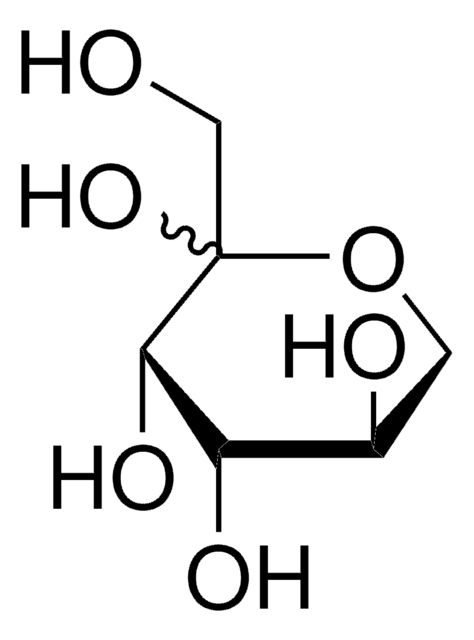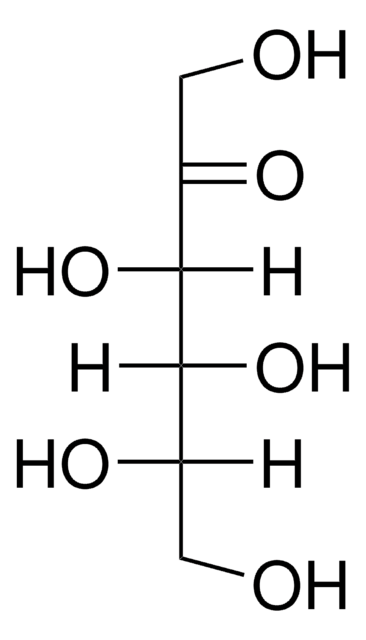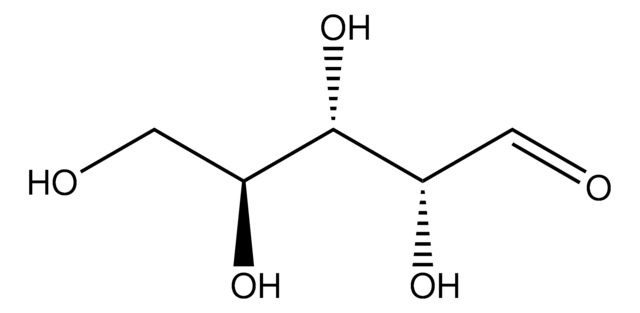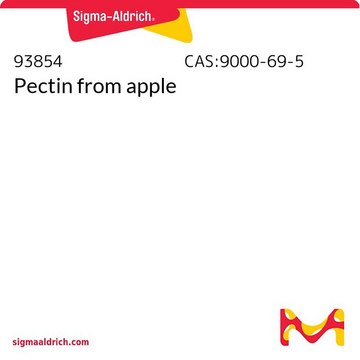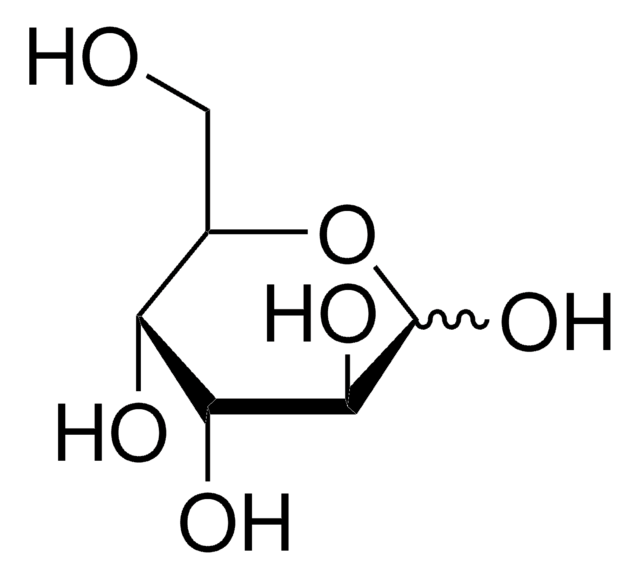All Photos(1)
About This Item
Empirical Formula (Hill Notation):
C6H12O6
CAS Number:
Molecular Weight:
180.16
Beilstein:
1724559
EC Number:
MDL number:
UNSPSC Code:
12352201
PubChem Substance ID:
NACRES:
NA.25
Recommended Products
biological source
synthetic
Assay
≥99%
form
powder
optical activity
[α]20/D 36 to 44 °, c = 1% (w/v) in water
technique(s)
gas chromatography (GC): suitable
color
white
solubility
water: 50 mg/mL, clear, colorless to light yellow
storage temp.
room temp
SMILES string
OC[C@@H](O)[C@H](O)[C@@H](O)C(=O)CO
InChI
1S/C6H12O6/c7-1-3(9)5(11)6(12)4(10)2-8/h3,5-9,11-12H,1-2H2/t3-,5+,6+/m1/s1
InChI key
BJHIKXHVCXFQLS-PYWDMBMJSA-N
Looking for similar products? Visit Product Comparison Guide
Other Notes
To gain a comprehensive understanding of our extensive range of Monosaccharides for your research, we encourage you to visit our Carbohydrates Category page.
Storage Class Code
11 - Combustible Solids
WGK
WGK 3
Flash Point(F)
Not applicable
Flash Point(C)
Not applicable
Personal Protective Equipment
dust mask type N95 (US), Eyeshields, Gloves
Choose from one of the most recent versions:
Already Own This Product?
Find documentation for the products that you have recently purchased in the Document Library.
Customers Also Viewed
S Shaghaghian et al.
Iranian Red Crescent medical journal, 14(10), 686-691 (2013-01-04)
Vancomycin-resistant enterococci (VRE) recently have emerged as a nosocomial pathogen among dialysis patients. This study aims to appraise the prevalence, incidence density and risk factors for VRE colonization among these patients. In this prospective study, 782 stool or rectal swab
Jessie Fernandez et al.
PLoS genetics, 8(5), e1002673-e1002673 (2012-05-10)
Understanding the genetic pathways that regulate how pathogenic fungi respond to their environment is paramount to developing effective mitigation strategies against disease. Carbon catabolite repression (CCR) is a global regulatory mechanism found in a wide range of microbial organisms that
D B Moody et al.
The Journal of experimental medicine, 192(7), 965-976 (2000-10-04)
T cells recognize microbial glycolipids presented by CD1 proteins, but there is no information regarding the generation of natural glycolipid antigens within infected tissues. Therefore, we determined the molecular basis of CD1b-restricted T cell recognition of mycobacterial glycosylated mycolates, including
Sallie A Ruskoski et al.
Journal of medical microbiology, 66(7), 965-971 (2017-07-20)
The purpose of the present study was to obtain a better understanding of the relationship between cell surface physiology and outer cellular envelope permeability for hydrophobic substances in mucoid and non-mucoid B. multivorans strains, as well as in two capsule-deficient
Zhangliang Zhu et al.
Microbial cell factories, 18(1), 59-59 (2019-03-27)
A novel D-allulose 3-epimerase from Staphylococcus aureus (SaDAE) has been screened as a D-allulose 3-epimerase family enzyme based on its high specificity for D-allulose. It usually converts both D-fructose and D-tagatose to respectively D-allulose and D-sorbose. We targeted potential biocatalysts
Our team of scientists has experience in all areas of research including Life Science, Material Science, Chemical Synthesis, Chromatography, Analytical and many others.
Contact Technical Service
